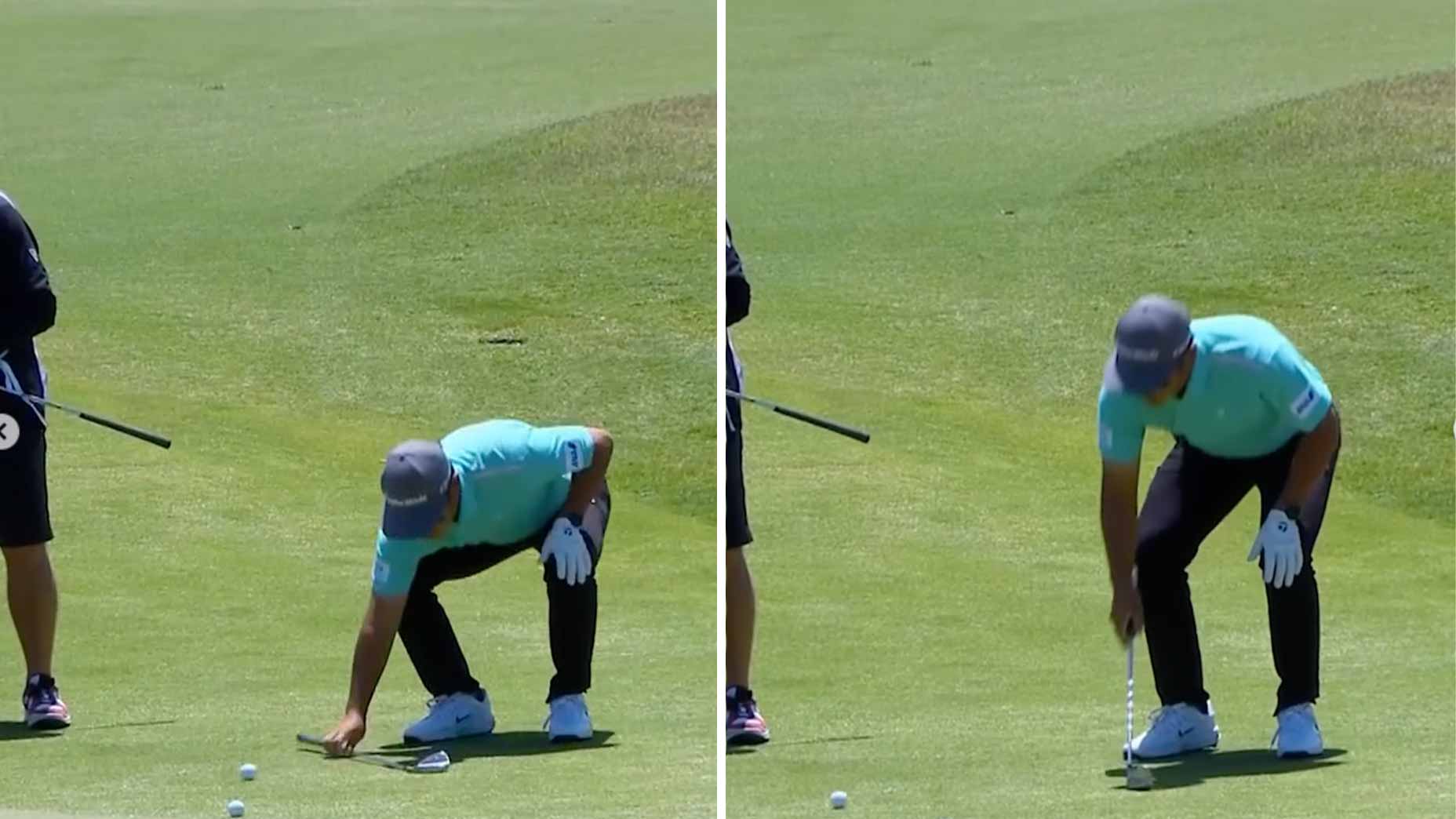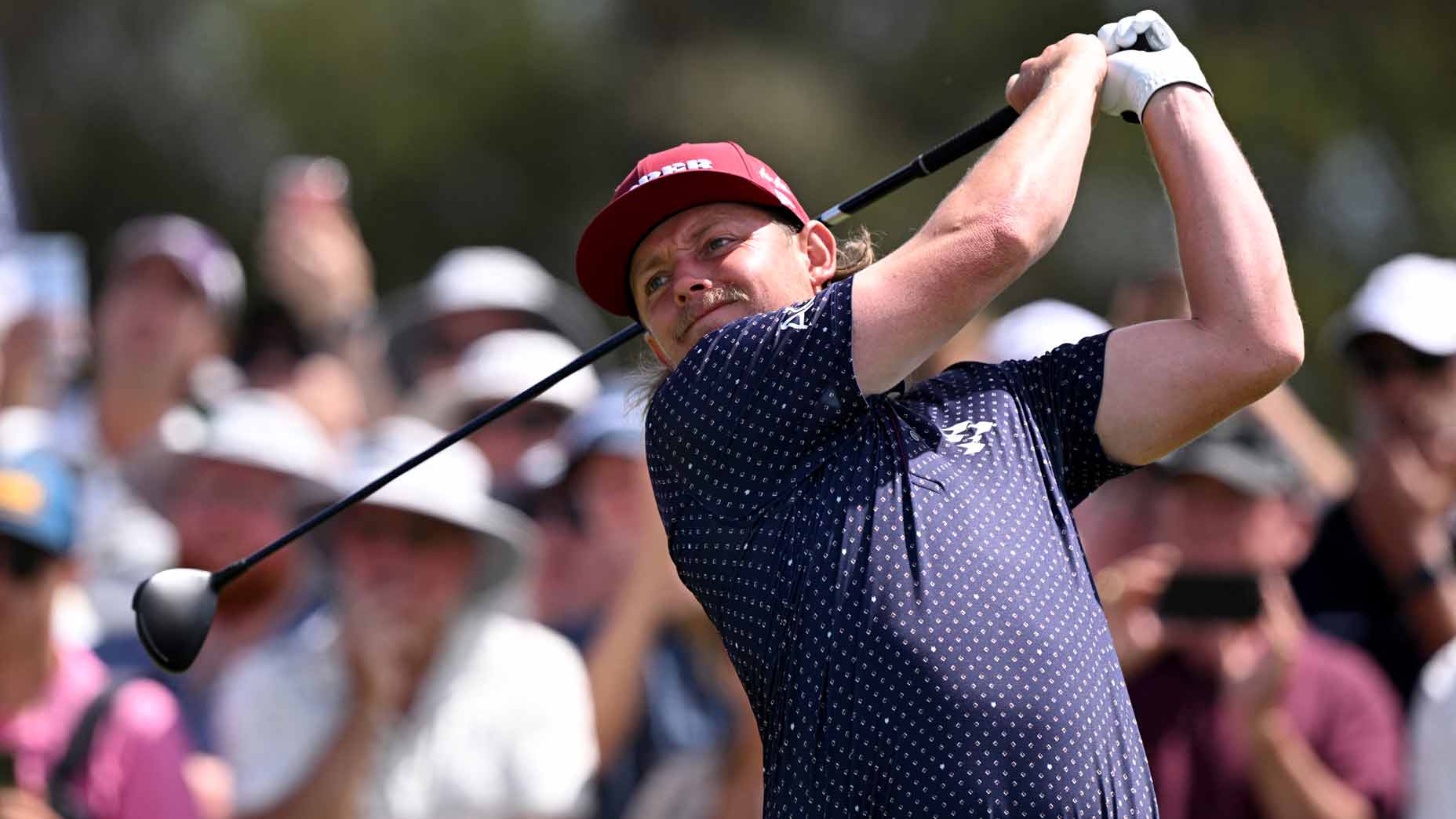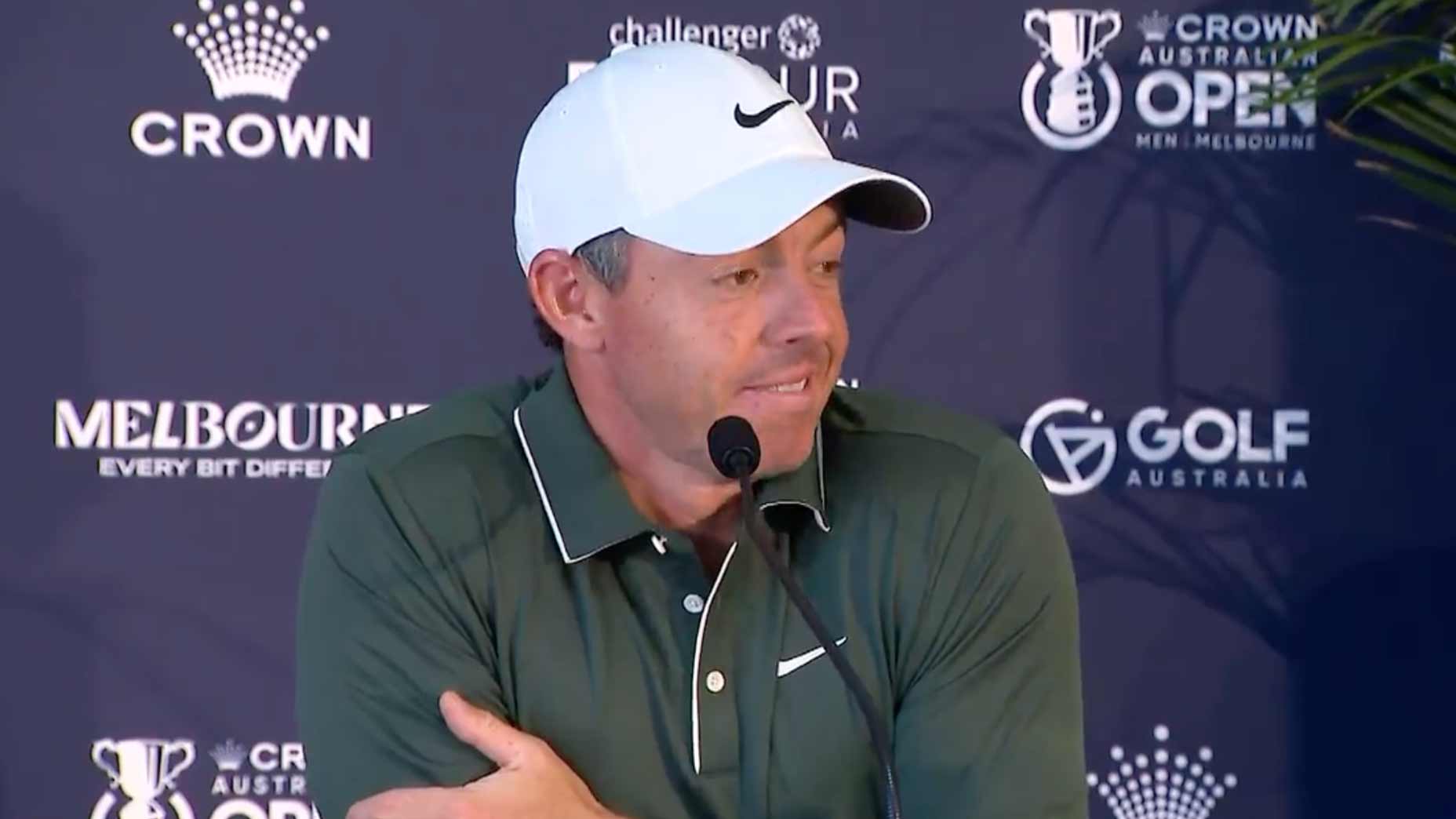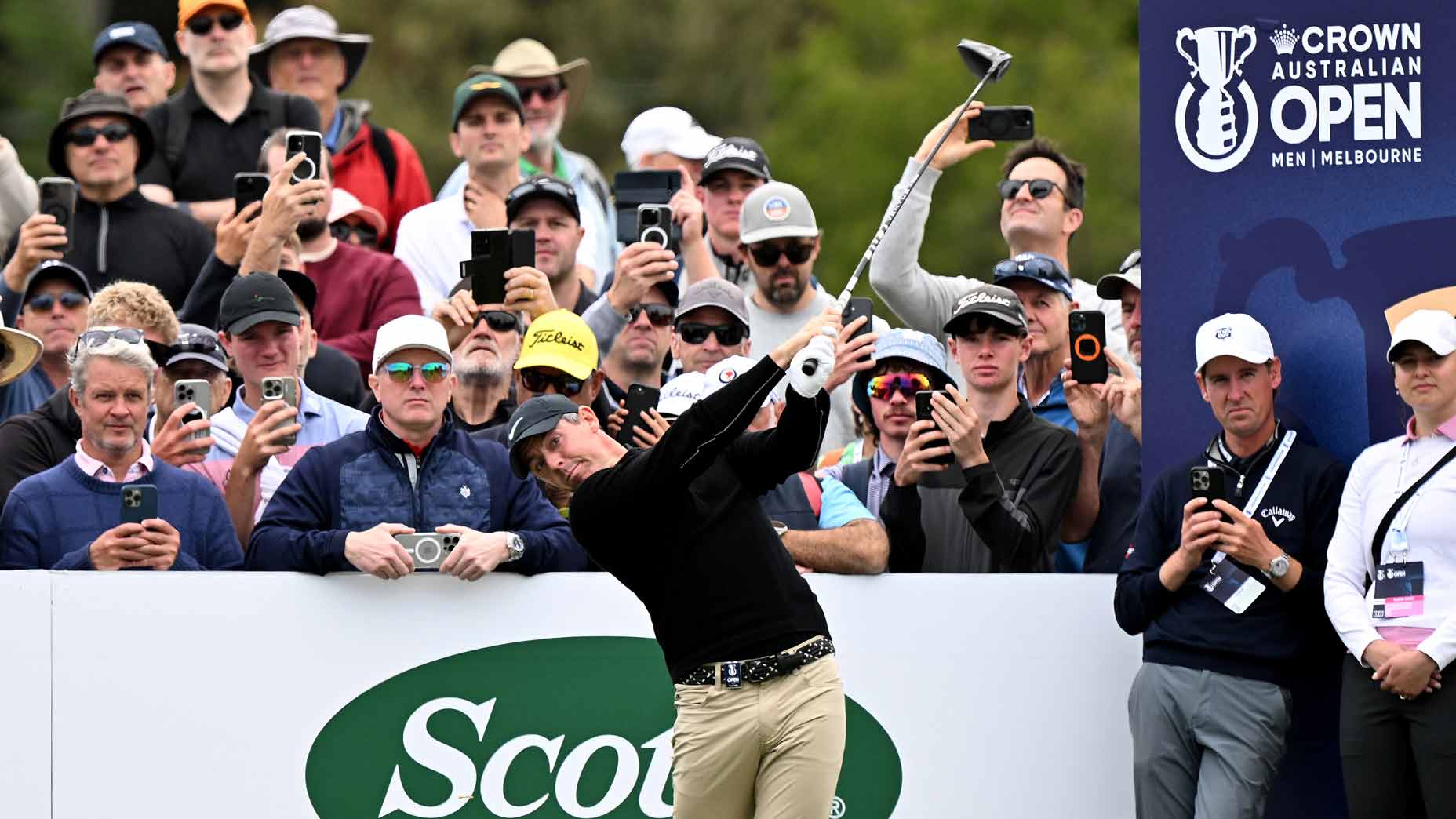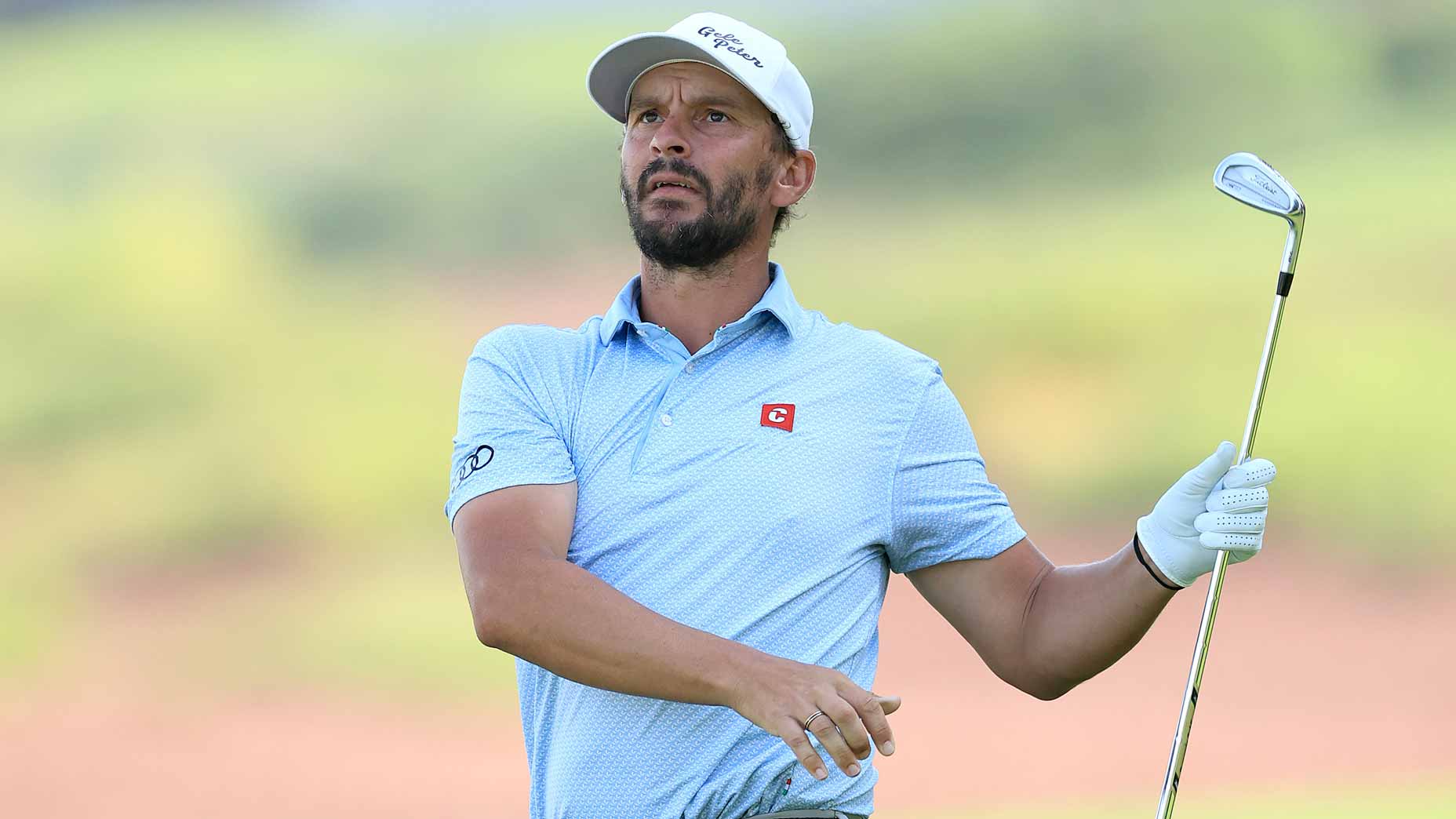Patrick Reed’s controversial week at the Dubai Desert Classic isn’t over yet.
Just days after Reed’s tee-throwing incident with Rory McIlroy set the golf world ablaze, the enigmatic former Masters winner found himself in the crosshairs of a bizarre rules controversy on Saturday at the DP World Tour’s Dubai Desert Classic resulting in a drop that Reed later called “lucky.”
After a wayward tee shot on the 359-yard par-4 17th hole at Emirates Golf Club, Reed arrived at his ball to find it lodged in one of three palm trees adjacent to the fairway. With the help of a pair of binoculars and “two on-course referees and several marshals,” Reed identified his ball in the tree closest to the green. DP World Tour chief referee John Paramor used the binoculars to confirm Reed’s identification.
Both golfer and referee conferred on the ruling, which resulted in Reed taking an unplayable from underneath the set of palm trees closest to the hole, granting him an unobstructed view of the green.
Back at home, however, replays appeared to show Reed’s ball lodging in the tree furthest from the green, leading some viewers to suggest he had misidentified his golf ball. Other angles of the palm where Reed said his ball was stuck appeared to show scores of other golf balls — at least six of them in one angle alone — lodged into the palm.
Patrick Reed identifies his ball in left of the 3 trees yet the tv camera clearly shows it going in the right hand tree?? Am I missing something pic.twitter.com/tOr3yTza14
— Michael Farrier-Twist (@michaelftwist) January 29, 2023
The actual location of Reed’s ball is significant for a couple of reasons. Had Reed’s ball been identified as lodged in the palm tree furthest from the hole, he would have faced a tougher angle for his approach shot into the green. Had his ball been unidentifiable in the tree, he would have been forced to take a lost ball penalty, which would have resulted in Reed taking a one-stroke penalty and returning to the tee to hit another shot — a more severe penalty than the one incurred by the unplayable. By identifying his ball as lodged into the tree closest to the hole, Reed was able to avoid both situations.
“I would have gone back to the tee if I wasn’t 100 percent [certain that it was my ball],” Reed said.
In a post-round interview with the golf account @TourMiss, Reed downplayed the location of his drop as little more than a lucky break, offering that his unique way of marking a golf ball — with an “arrow” and red dot — made him certain the ball he identified in the tree was his.
“I got lucky that we were able to look through the binoculars and you have to make sure it’s your ball,” Reed said. “How I mark my golf balls is I always put an arrow on the end of my line — because the Pro V1 arrow on the end stops before it — so you can see the arrow. And you could definitely see and identify the line with the arrow on the end. The Rules official luckily was there to reconfirm and check to make sure it was mine as well.”
Evidently, the rules officials responsible for handling the situation agreed with Reed’s interpretation.
“The DP World Tour chief referee joined the player in the area and asked him to identify his distinctive ball markings,” the DP World Tour said in a statement on the situation. “Using binoculars, the chief referee was satisfied that a ball with those markings was lodged in the tree.”
Reed would go on to make bogey on the hole en route to a 3-under 69 on Saturday in Dubai. He sits at 11 under through three rounds at the Desert Classic, tied for 4th and four strokes back of the leader, Rory McIlroy.
Here's an image of the tree that allegedly held Reed's ball, as shown on Golf Channel's broadcast.
— James Colgan (@jamescolgan26) January 29, 2023
Not clear if this is exactly where Reed spotted his ball, but as you can see, at least six golf balls (by my count) are lodged in the palm. pic.twitter.com/RRcKS24Apm
In recent years, Reed’s on-course transgressions have resulted in a handful of rules-related controversies. In 2019, NBC cameras appeared to show him improving his lie from a waste bunker at the Hero World Challenge — an offense for which tournament officials later assessed him a two-stroke penalty. At the Farmers Insurance Open in 2021, Reed was criticized for removing his ball from the ground while he awaited a rules official to rule on relief for an embedded ball — a move Reed attributed to pace of play. The official eventually arrived on the scene and ruled that Reed was eligible for embedded-ball relief. Reed went on to win the tournament by five shots.
Just this week, Reed found himself at the center of a separate controversy when he appeared to throw a tee in the direction of Rory McIlroy after McIlroy ignored him during a practice round. McIlroy later downplayed the situation, but attributed the awkwardness to Reed’s lawyers, who subpoenaed McIlroy at his residence on Christmas Eve.
“Yeah, I was subpoenaed by his lawyer on Christmas Eve,” he explained. “So of course, trying to have a nice time with my family and someone shows up on your doorstep and delivers that, you’re not going to take that well.
So again, I’m living in reality, I don’t know where he’s living,” McIlroy said. “If I were in his shoes, I wouldn’t expect a hello or a handshake.”
Reed also downplayed the severity of the situation but slammed McIlroy in his own press conference.
“He saw me and he decided not to react. It’s unfortunate,” Reed said. “But it is one of those things: if you’re going to act like an immature little child then you might as well be treated like one.”
Reed will begin his final round at the Dubai Desert Classic at 9:15 a.m. local time.



